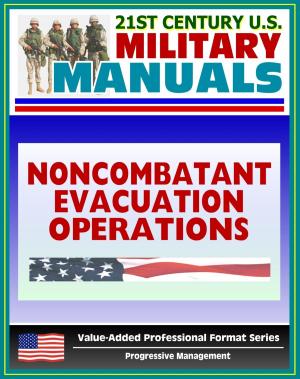Army Lineage Series: The Organizational History of Field Artillery, 1775 - 2003 - Revolutionary War to Nuclear Missiles, Civil War, World War II, Atomic Field Army, Korea, Vietnam, Desert Storm
Nonfiction, History, Military, Weapons, United States| Author: | Progressive Management | ISBN: | 9781310752179 |
| Publisher: | Progressive Management | Publication: | February 19, 2015 |
| Imprint: | Smashwords Edition | Language: | English |
| Author: | Progressive Management |
| ISBN: | 9781310752179 |
| Publisher: | Progressive Management |
| Publication: | February 19, 2015 |
| Imprint: | Smashwords Edition |
| Language: | English |
The volume published by 1st Lt. William E. Birkhimer on the history of artillery in the United States Army was the standard work on the subject for over one hundred years. Lieutenant Birkhimer's history is a valuable contribution to understanding the background of artillery in the United States through the Civil War period, but artillery has changed radically since its publication. This volume, The Organizational History of Field Artillery, 1775-2003, addresses the need for a modern work that records the historical structure, strength, disposition, materiel, and technical and tactical doctrine of artillery in the U.S. Army. It complements the lineage volume on Regular Army and Army Reserve field artillery regiments, published in 1985 but currently being updated to include commands, brigades, groups, and regiments in all three components. In the last thirty years, several books on field artillery have appeared, some popular histories and a few scholarly works, but the focus of this volume is on the organizational structure of U.S. Army artillery rather than its weapons or its operations. In the main, the narrative is chronological, with nuclear missiles and rockets covered separately because their history did not follow that of cannon artillery.
The term artillery originally referred to all engines of war designed to discharge missiles, such as the catapult, ballista, and trebuchet, among others. Toward the end of the Middle Ages, weapons employing gunpowder superseded such engines of war, and in a more restricted sense, artillery came to mean all firearms not carried and used by hand. By the mid-twentieth century, it included all manner of large guns (as distinguished from small arms), howitzers, rockets, and guided missiles, and also came to be applied to the personnel who transport and service the weapons and to the organization and branch of the Army to which the personnel are assigned.
CHAPTER 1 - THE BEGINNINGS * Artillery Organization * Artillery Weapons * Artillery Employment * CHAPTER 2 - REORGANIZING THE ARM * Organizational Experimentation * The Rise of Field Artillery * The Mexican War * CHAPTER 3 - THE CIVIL WAR * The Prewar Years * Artillery Organization * From Mobile to Static Warfare * CHAPTER 4 - DIVERGING MISSIONS * Era of Slow Progress * The War With Spain * Postwar Reforms * CHAPTER 5 - A TIME OF GROWTH * Modernizing the Arm * Organizing for War * On the Battlefield * CHAPTER 6 - BETWEEN THE WARS * The Postwar Years * Motorization and Mechanization * Advances in Materiel * Organizational Developments * Training and Doctrine * CHAPTER 7 - WORLD WAR II * Infantry Division Artillery * Other Division Artillery * Nondivisional Field Artillery * On the Battlefield * CHAPTER 8 - POSTWAR REORGANIZATION * Division Artillery * Nondivisional Artillery * The Korean War * Europe and the "New Look" * CHAPTER 9 - THE NUCLEAR ARENA * Early Missile Developments * Honest John Rocket * Fielding the New Missiles * From the Redstone to Satellites * Command and Control * Lacrosse Missile * Sergeant Missile * Little John Rocket * Pershing Missile * Lance Missile * Pershing II Versus Cruise Missiles * End of an Era * CHAPTER 10 - THE ROAD TO FLEXIBLE RESPONSE * The 280-mm. Gun * Atomic Field Army * PENTANA * Division Artillery * Combat Arms Regimental System * Reorganization Objective Army Divisions * Materiel Developments * Airmobility * CHAPTER 11 - VIETNAM * Artillery Buildup * Adapting to the Environment * Redeployment * CHAPTER 12 - MODERNIZATION EFFORTS * Materiel * Force Structure * Army 86 and AirLand Battle * CHAPTER 13 - TOWARD A NEW CENTURY * Operation Desert Storm * Reorganizing the Force * Return to Iraq * In Retrospect * APPENDIX A—Chiefs of Field Artillery * APPENDIX B—Field Artillery School Commandants * BIBLIOGRAPHY * ABBREVIATIONS AND ACRONYMS
The volume published by 1st Lt. William E. Birkhimer on the history of artillery in the United States Army was the standard work on the subject for over one hundred years. Lieutenant Birkhimer's history is a valuable contribution to understanding the background of artillery in the United States through the Civil War period, but artillery has changed radically since its publication. This volume, The Organizational History of Field Artillery, 1775-2003, addresses the need for a modern work that records the historical structure, strength, disposition, materiel, and technical and tactical doctrine of artillery in the U.S. Army. It complements the lineage volume on Regular Army and Army Reserve field artillery regiments, published in 1985 but currently being updated to include commands, brigades, groups, and regiments in all three components. In the last thirty years, several books on field artillery have appeared, some popular histories and a few scholarly works, but the focus of this volume is on the organizational structure of U.S. Army artillery rather than its weapons or its operations. In the main, the narrative is chronological, with nuclear missiles and rockets covered separately because their history did not follow that of cannon artillery.
The term artillery originally referred to all engines of war designed to discharge missiles, such as the catapult, ballista, and trebuchet, among others. Toward the end of the Middle Ages, weapons employing gunpowder superseded such engines of war, and in a more restricted sense, artillery came to mean all firearms not carried and used by hand. By the mid-twentieth century, it included all manner of large guns (as distinguished from small arms), howitzers, rockets, and guided missiles, and also came to be applied to the personnel who transport and service the weapons and to the organization and branch of the Army to which the personnel are assigned.
CHAPTER 1 - THE BEGINNINGS * Artillery Organization * Artillery Weapons * Artillery Employment * CHAPTER 2 - REORGANIZING THE ARM * Organizational Experimentation * The Rise of Field Artillery * The Mexican War * CHAPTER 3 - THE CIVIL WAR * The Prewar Years * Artillery Organization * From Mobile to Static Warfare * CHAPTER 4 - DIVERGING MISSIONS * Era of Slow Progress * The War With Spain * Postwar Reforms * CHAPTER 5 - A TIME OF GROWTH * Modernizing the Arm * Organizing for War * On the Battlefield * CHAPTER 6 - BETWEEN THE WARS * The Postwar Years * Motorization and Mechanization * Advances in Materiel * Organizational Developments * Training and Doctrine * CHAPTER 7 - WORLD WAR II * Infantry Division Artillery * Other Division Artillery * Nondivisional Field Artillery * On the Battlefield * CHAPTER 8 - POSTWAR REORGANIZATION * Division Artillery * Nondivisional Artillery * The Korean War * Europe and the "New Look" * CHAPTER 9 - THE NUCLEAR ARENA * Early Missile Developments * Honest John Rocket * Fielding the New Missiles * From the Redstone to Satellites * Command and Control * Lacrosse Missile * Sergeant Missile * Little John Rocket * Pershing Missile * Lance Missile * Pershing II Versus Cruise Missiles * End of an Era * CHAPTER 10 - THE ROAD TO FLEXIBLE RESPONSE * The 280-mm. Gun * Atomic Field Army * PENTANA * Division Artillery * Combat Arms Regimental System * Reorganization Objective Army Divisions * Materiel Developments * Airmobility * CHAPTER 11 - VIETNAM * Artillery Buildup * Adapting to the Environment * Redeployment * CHAPTER 12 - MODERNIZATION EFFORTS * Materiel * Force Structure * Army 86 and AirLand Battle * CHAPTER 13 - TOWARD A NEW CENTURY * Operation Desert Storm * Reorganizing the Force * Return to Iraq * In Retrospect * APPENDIX A—Chiefs of Field Artillery * APPENDIX B—Field Artillery School Commandants * BIBLIOGRAPHY * ABBREVIATIONS AND ACRONYMS















